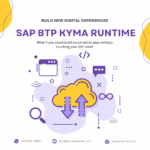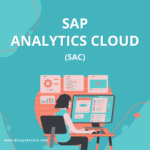Introduction
In the digital era, efficient financial management is not just a necessity—it’s a strategic advantage. Companies that can access real-time insights, ensure data consistency, and streamline processes are better positioned to compete and grow. This is where SAP FICO (SAP Financial Accounting and Controlling) comes into play. SAP FICO is a comprehensive solution that unifies financial accounting with internal controlling, empowering organizations to make informed decisions quickly and accurately.
In this blog, we will explore how SAP FICO transforms financial management, the common challenges it addresses, and practical strategies for implementing this robust ERP module to build a resilient, agile, and data-driven enterprise.
The Importance of Integrated Financial Management
Why SAP FICO Matters
Financial management is the heartbeat of any organization. The ability to manage cash flows, control costs, and monitor performance in real time can make the difference between success and stagnation. However, many companies still rely on fragmented financial systems that create data silos and delay critical decision-making.
SAP FICO offers a unified platform that:
- Consolidates financial data into one single source of truth.
- Automates routine processes, reducing errors and manual effort.
- Provides real-time reporting and analytics to guide strategic decisions.
- Ensures compliance with global accounting standards and regulations.
In today’s fast-paced business environment, companies need more than just numbers—they need insights. SAP FICO transforms raw financial data into actionable intelligence, enabling leaders to steer their organizations confidently.
The Challenges of Traditional Financial Systems
Fragmented Data and Inconsistent Reporting
Many enterprises struggle with data spread across multiple systems. Without a unified platform, financial information can become inconsistent, leading to inaccurate reports and delayed decision-making. This fragmentation not only increases the risk of errors but also makes it difficult to gain a comprehensive view of the company’s financial health.
Manual Processes and Human Error
Manual data entry, reconciliations, and validations are time-consuming and error-prone. Even small mistakes in financial data can lead to significant issues, including compliance risks and misinformed strategic decisions. The reliance on manual processes also diverts valuable resources from strategic activities to repetitive tasks.
Slow Decision-Making
In today’s dynamic market, timing is everything. Delayed financial reporting and outdated data can hinder a company’s ability to react quickly to market changes. Without real-time insights, businesses may miss opportunities or fail to address emerging risks promptly.
Compliance and Regulatory Challenges
Keeping up with ever-changing accounting standards and regulatory requirements is a constant challenge. Disparate systems and manual processes can make it difficult to maintain compliance, leading to potential legal and financial penalties.
How SAP FICO Solves These Challenges
1. Unified Financial Data Management
SAP FICO brings together all financial data—sales, expenses, assets, liabilities—into a single, integrated system. This unified approach ensures that every transaction is recorded accurately and consistently across the organization.
- General Ledger: Centralizes financial transactions, providing a clear, consolidated view of all accounting entries.
- Accounts Payable/Receivable: Automates the processing of invoices and payments, reducing manual errors and speeding up cash flow.
- Asset Accounting: Manages the full lifecycle of fixed assets, from acquisition to disposal, ensuring precise tracking and depreciation.
2. Automation and Process Efficiency
Automation is key to reducing manual workload and minimizing errors. SAP FICO automates many routine tasks, such as data entry and reconciliation, freeing up employees to focus on strategic initiatives.
- Workflow Automation: Streamlines approval processes and routine tasks, ensuring that critical actions are taken without delay.
- Automated Reconciliation: Reduces the risk of discrepancies by automatically matching transactions across various accounts.
- Real-Time Data Updates: Ensures that financial data is updated continuously, allowing for immediate insights and timely decision-making.
3. Real-Time Reporting and Analytics
Timely, accurate data is essential for making informed decisions. With SAP FICO, companies can generate real-time reports and dynamic dashboards that offer a comprehensive view of their financial performance.
- Interactive Dashboards: Visualize key financial metrics, such as revenue, expenses, and profitability, at a glance.
- Customizable Reports: Tailor reports to meet the specific needs of different departments, from finance to operations.
- Predictive Analytics: Use historical data and trends to forecast future performance and identify potential risks before they escalate.
4. Enhanced Compliance and Control
Regulatory compliance is non-negotiable for any organization. SAP FICO integrates robust compliance controls and audit trails that ensure every financial process adheres to global standards.
- Audit Trails: Every transaction is logged, providing a transparent history that supports audits and regulatory reviews.
- Automated Controls: Built-in controls enforce compliance with accounting standards, reducing the risk of manual oversight.
- Standardized Processes: Consistent workflows ensure that every part of the organization follows the same financial practices.
5. Scalability and Flexibility
As businesses grow and evolve, so do their financial needs. SAP FICO is designed to scale with your organization, offering the flexibility to adapt to changing market conditions without compromising performance.
- Modular Architecture: Implement specific components of SAP FICO that address your immediate needs, with the ability to expand later.
- Integration with Other Modules: Seamlessly connect with other SAP solutions like SAP MM (Materials Management), SAP SD (Sales and Distribution), and SAP HANA for a comprehensive ERP ecosystem.
- Cloud and On-Premise Options: Deploy SAP FICO in a way that best fits your organizational structure and growth plans.
Real-World Impact: Case Studies and Success Stories
Case Study 1: A Global Retailer’s Financial Overhaul
A multinational retailer faced significant challenges with fragmented financial data and slow reporting cycles. By implementing SAP FICO, the company was able to centralize its financial processes across all regions. The result was a 40% reduction in monthly closing time, enhanced data accuracy, and improved decision-making capabilities that allowed for better inventory and cash flow management.
Case Study 2: Streamlining Operations in a Manufacturing Enterprise
A large manufacturing firm struggled with manual processes and inconsistent financial reporting, leading to delays in strategic planning. With SAP FICO, the firm automated key functions such as invoice processing and asset accounting. This led to a 30% improvement in operational efficiency and provided management with real-time insights that helped optimize production schedules and reduce costs.
Case Study 3: Financial Services Reinvented
A major financial institution needed to maintain rigorous compliance while managing a high volume of transactions. By leveraging SAP FICO, the institution was able to automate compliance checks, improve audit trails, and standardize financial reporting. These improvements resulted in enhanced regulatory compliance, reduced manual intervention, and a significant boost in overall operational performance.
Best Practices for Implementing SAP FICO
To fully leverage the benefits of SAP FICO, organizations should consider the following best practices:
1. Define Clear Objectives
Establish what you want to achieve with SAP FICO. Whether it’s faster closing cycles, improved cost control, or enhanced regulatory compliance, clear objectives will guide your implementation strategy.
2. Engage Stakeholders Early
Bring together finance, IT, operations, and business leaders to ensure that the solution meets the needs of all departments. Collaboration is key to a successful implementation.
3. Start with Standard Features
Utilize SAP FICO’s robust standard functionality before considering customizations. This approach simplifies future upgrades and reduces the risk of integration issues.
4. Invest in Training
Ensure that your team is well-trained on SAP FICO. Comprehensive training programs will help staff adapt to new processes and maximize the platform’s potential.
5. Monitor and Optimize Continuously
Set up performance metrics to monitor the impact of SAP FICO. Use real-time dashboards and regular reviews to identify areas for improvement and fine-tune processes accordingly.
The Broader Impact: Shaping the Future of Financial Management
The move to integrated, real-time financial management with SAP FICO is not just about efficiency—it’s about strategic transformation. A unified financial system provides a platform for better decision-making, more agile responses to market changes, and a solid foundation for sustainable growth.
By breaking down data silos and automating routine tasks, SAP FICO enables organizations to:
- Enhance operational efficiency.
- Reduce costs and mitigate risks.
- Empower leaders with timely insights.
- Foster a culture of continuous improvement and strategic thinking.
In today’s competitive landscape, the ability to make informed, real-time decisions is critical. SAP FICO equips businesses with the tools needed to stay ahead, ensuring that every financial process contributes to the organization’s long-term success.
Conclusion
SAP FICO is more than just a financial management tool—it’s a strategic asset that transforms how businesses operate. By unifying financial accounting and controlling processes, SAP FICO creates a holistic view of an organization’s financial health. It streamlines operations, reduces manual intervention, and provides the insights necessary for agile decision-making.
In a world where data is abundant but true insight is rare, SAP FICO stands out by turning complex financial information into actionable intelligence. It empowers companies to close the gap between their current performance and their strategic potential.
As you embark on your digital transformation journey, consider how SAP FICO can help you build a resilient, efficient, and intelligent financial system. The future of business depends not just on technology, but on how well that technology serves your unique needs. With SAP FICO, you have the foundation for a smarter, more agile enterprise.
Are you ready to redefine your financial management and lead your organization into the future? The path to innovation and growth starts with making informed, strategic decisions—one transaction at a time.











